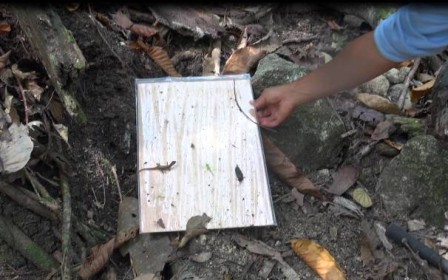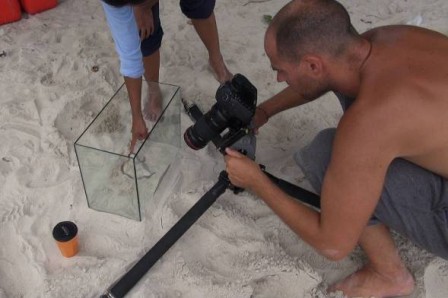Friday 14th November, from base camp in Kumawa.
Today, I am accompanying Evy and Tri, the two Indonesian herpetologists. In the forest surrounding the camp, they have placed lizard traps (sticky traps with mouse glue spread on a wooden base) and varan traps (pvc pipes sealed at one end and in which they put some bait). They check them twice a day: once during the day, and once at dusk.
Today’s collection catch is quite good: there is a lizard on every sticky trap, or almost, but no varan in the pvc tubes. The lizards are all of the same species, with one exception. They belong to the most frequently captured species since our arrival. Evy explains that this species is common, because it can resist drought quite well, unlike most of the species potentially found in the region. The species proliferates in the rather dry conditions prevailing at the moment.
On her return, Evy is surprised to find a snake, caught on the beach by another team. She asks Aurélien to photograph it with his macro lens. It is a fossorial snake with a very slim body, of the Ramphotyphlops family. It is small (about 40 cm,) with a very small mouth, and it is not venomous. It cannot have very good sight, for scales cover its eyes. As it lives in the sand, sight is not the most important sense for the snake. Evy finds interesting this adaptation to the milieu, a result of evolution.
In the evening, Evy sets off again to try and capture some frogs and snakes by the river. Here the majority of the species of snakes are nocturnal. It must be said that nights are quite hot, which is an advantage for these animals that are not able to regulate their body temperature.
(translated by 2nd-year Life & Earth Science students, L2 SVC, Group C2, UM2, France)




